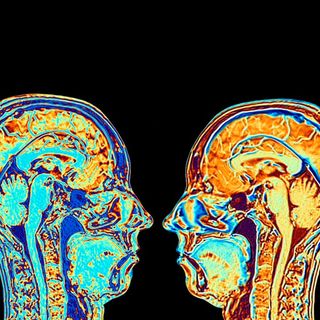
The Difference Between Feeling Panic and a Panic Attack
Panic is a completely normal response to specific situations, but for some people, the feeling comes out of nowhere.

Panic is a completely normal response to specific situations, but for some people, the feeling comes out of nowhere — they feel panicky for no reason. Knowing the difference between feeling panicky and having a panic attack can make us better prepared to help ourselves or loved ones through any struggles against overwhelming alarm.
What is panic?
Panic is a combination emotion of alarm, fear, dismay, confusion, and helplessness, tinged with hysteria. It’s the rush of “WhatdoIdo? WhatdoIdo?” dread that comes when we realize we’ve forgotten a critical part of an important presentation, when a child gets lost in a crowd, or when we mistake a rustling shower curtain for an intruder. This emotional state triggers all sorts of physiological reactions in the body to prepare us to deal with what is, in some sense, a threat — to our livelihood or reputation, to a loved one’s safety, to our own safety. But that’s the critical part of feeling panicky: it’s a response to a specific situation or event. Panicky feelings resolve when the threat has been addressed or eliminated.
Related on The Swaddle:
The Biology of Panic Is Much More Than an Adrenaline Rush
What is a panic attack?
A panic attack occurs when we feel panicky for no reason or without any serious threat.
During a panic attack, the emotion is amped up to 100 and comes out of nowhere. The body’s natural response to panic seems to hit all at once, peaking within minutes, and during this time, people often feel confused and out of control, according to the Mayo Clinic; many people mistake a panic attack for a heart attack and worry they’re dying. They’re not — a panic attack is not dangerous, though it can be very scary and uncomfortable for the people going through it. But because panic attack symptoms are so similar to those of a heart attack or thyroid problem, for example, experts advise consulting a doctor as soon as possible to confirm the experience was a panic attack and not a more serious condition.
Panic attack symptoms last anywhere from five to 30 minutes and can include the following:
- An intense feeling of dread or terror
- A feeling of surrealness or detachment
- A feeling of being out of control
- Accelerated or pounding heartbeat
- Chest pain
- Sweating
- Difficulty breathing
- A choking or smothered feeling, or tightness in the throat
- Nausea, or stomach pain
- Lightheadedness, or dizziness
- Chills, or hot flashes
- Tingling or numbness in the extremities
- Trembling or shaking
- Headache
A panic attack can be expected or unexpected, according to the Diagnostic and Statistical Manual of Mental Disorders (DSM-5), the most up-to-date manual for psychiatric diagnosis authored by the American Psychiatric Association. Expected attacks are triggered during a stressful but non-threatening situation — when faced with a phobia, for instance, or a loved one’s diagnosis with illness, or the birth of a child. Unexpected attacks don’t have an obvious cause and can strike at any time. It’s even possible to have a panic attack in your sleep and wake up with the above symptoms.
The cause of panic attacks is unknown. Personality, genetics, stressful situations, and sometimes co-occurring mental health disorders may all or individually play a role.
Related on The Swaddle:
The Difference Between Feeling Anxious and Having Anxiety
What is panic disorder?
While it’s common to experience one to two panic attacks in the course of a lifetime, repeated panic attacks may speak panic disorder, a diagnosable mental health condition recognized by the DSM-5.
People with panic disorder experience recurrent, unexpected attacks and anticipate and feel panicky for no reason other than the potential of another attack, according to the Cleveland Clinic. Nocturnal panic attacks are more common among people with panic disorder.
Panic disorder is twice as common in women as in men, according to U.S. statistics. (This may just be because some risk factors — such as experiencing sexual abuse or assault — are more common among women.) The condition is typically diagnosed after age 20, according to the Anxiety and Depression Association of America, though children can have panic disorder, too.
Many people with panic disorder live highly inhibited lives in order to cope with their attacks. They may struggle to work or may avoid situations that could trigger an attack. Some live in a constant state of fear of the next panic attack, according to the Mayo Clinic. Others struggle to manage co-occurring mental health disorders that exacerbate their panic disorder.
Panic disorder is very treatable, however. Professional therapists trained in talk therapy and/or cognitive behavior therapy can help individuals cope with and eventually reduce their symptoms, according to the Indian Journal of Psychiatry. In some cases, medication might also be recommended.
Ultimately, feeling panicky is a very normal reaction to a specific situation. A panic attack is a very normal, albeit rare, experience. Panic disorder is also normal — it just happens to be a bit rarer and calls for a bit more help.
Liesl Goecker is The Swaddle's managing editor.
Related


People With Mood Disorders Share Same Neural Abnormalities as Those With Anxiety Disorders: Study
